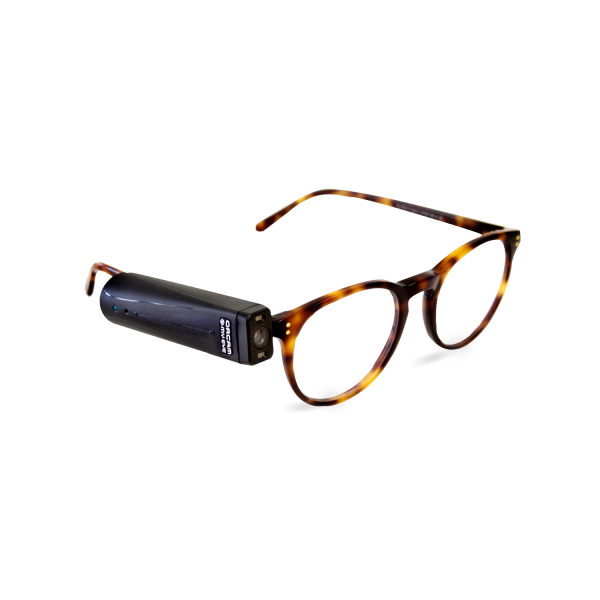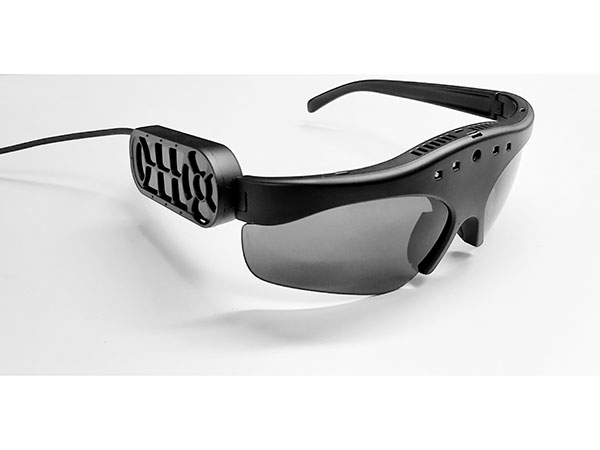Enhancing Access Via Assistive Innovation for the Blind
The integration of assistive technology for the blind stands for a critical advancement in availability, basically changing how individuals browse their atmospheres and involve with society. As we discover the diverse types of assistive devices and their concrete influences on everyday living, it ends up being necessary to examine exactly how ongoing technical innovations are improving the landscape of support for the blind area.
Overview of Assistive Innovation
Assistive technology describes a variety of gadgets and software created to improve the abilities of people with handicaps, including those that are blind or visually damaged. This technology plays a vital role in advertising freedom and boosting the high quality of life for customers. By offering different approaches for accessing info and carrying out everyday jobs, assistive modern technology empowers individuals to browse their atmospheres a lot more effectively.
The development and implementation of assistive modern technology embrace a range of principles focused on cultivating access. These concepts include user-centered style, which prioritizes the demands and choices of the individual, and the integration of innovation right into day-to-day activities. Such improvements ensure that assistive tools are not only useful however simple and likewise user-friendly to make use of.
Moreover, assistive modern technology includes a diverse range of services, from low-tech choices like magnifiers to state-of-the-art innovations such as screen visitors and Braille display screens. The continuous evolution of this field is driven by the need to attend to the one-of-a-kind difficulties faced by people with visual problems (Wearable technology for low vision). As modern technology proceeds to advancement, the capacity for improving access and promoting inclusivity continues to be promising, inevitably contributing to a more fair culture

Kinds Of Assistive Devices
Numerous types of assistive tools are readily available to sustain people who are aesthetically damaged or blind, each created to attend to specific requirements and difficulties. These tools can be generally categorized into 3 main kinds: low-tech, mid-tech, and modern services.
Low-tech gadgets consist of items such as magnifiers, Braille tags, and tactile maps. These are reasonably easy tools that enhance the individual's ability to connect with their atmosphere without calling for complicated technology.
Mid-tech tools usually entail a lot more advanced functions, such as digital magnifiers and mobile Braille note-takers. These gadgets can provide functionalities like speech outcome, permitting users to accessibility information a lot more efficiently.

Effect on Daily Living
The accessibility of numerous assistive tools considerably improves the top quality of life for people who are aesthetically impaired or blind, influencing their everyday living in profound means. By incorporating technologies such as display viewers, Braille shows, and audio summary services into their routines, customers get better autonomy and independence. These devices help with accessibility to details, enabling people to execute everyday jobs, such as reading e-mails, navigating public areas, and taking pleasure in media content.
Furthermore, assistive gadgets empower people to engage even more completely in social communications and community activities. The ability to utilize mobile phones furnished with access features permits seamless interaction and link with others. This connectivity fosters a feeling disposable contacts of belonging and minimizes feelings of seclusion.
In expert setups, assistive technology supports efficiency by permitting individuals to full work jobs successfully. Tools like voice acknowledgment software program and specialized zoom devices allow users to take part in the workforce on equal footing with their sighted peers.

Advancements in Modern Technology
Current technical advancements have actually dramatically transformed the landscape of devices offered for individuals that are visually damaged or blind. The assimilation of man-made intelligence (AI) and artificial intelligence has actually given increase to applications that enhance navigating and things recognition. Mobile a fantastic read phone apps can currently use AI to recognize and describe surroundings in real-time, offering customers with important contextual info.
In addition, innovations in haptic technology have actually caused the advancement of wise walking canes furnished with sensors that find challenges and provide tactile comments. This encourages individuals to browse their environment with boosted confidence and self-reliance. Technologies in text-to-speech software and braille displays have improved the ease of access of electronic content, allowing for seamless communication with different media.
Wearable modern technologies, such as smart glasses, are also making strides in helping aesthetic problems. As technology continues to develop, the potential for also more transformative tools stays on the horizon.
Future Trends and Innovations
As modern technology swiftly advances, the future of assistive tools for people who are blind holds enormous guarantee. Developments in expert system (AI) and maker knowing are poised to change the method blind customers communicate with their settings. For instance, AI-driven applications are being created to enhance item acknowledgment, allowing individuals to identify and browse their environments with better ease and accuracy.
In addition, improvements in haptic feedback technology are enabling the development of tactile maps and navigating aids that give real-time info with touch. These developments not only boost movement however also foster independence. Furthermore, wearable tools geared up with increased fact (AR) functions are arising, using individuals aesthetic information through sound descriptions, therefore connecting the void between the electronic and physical worlds.
In addition, the assimilation of clever home modern technology provides new chances for availability, allowing people to manage their living atmospheres with voice commands or mobile phone applications. As cooperation in between tech developers and my sources the blind community proceeds, the focus on user-centered layout will certainly make sure that future innovations are customized to meet the distinct demands of this populace (Wearable technology for low vision). The trajectory of assistive innovation promises a more inclusive and empowering future for individuals that are blind
Final Thought
In verdict, assistive modern technology plays an important duty in boosting availability for individuals with aesthetic disabilities. Continuous advancements in modern technology and user-centered design make certain that these devices cater effectively to the unique requirements of the blind neighborhood.
The combination of assistive innovation for the blind represents a pivotal innovation in ease of access, basically modifying how people browse their settings and engage with society.Assistive modern technology refers to an array of tools and software developed to improve the capacities of individuals with specials needs, consisting of those who are blind or aesthetically damaged. Wearable technology for low vision.As innovation rapidly advances, the future of assistive tools for people who are blind holds tremendous guarantee. The trajectory of assistive innovation promises a much more empowering and comprehensive future for people that are blind
In final thought, assistive technology plays a vital function in boosting ease of access for individuals with visual impairments.